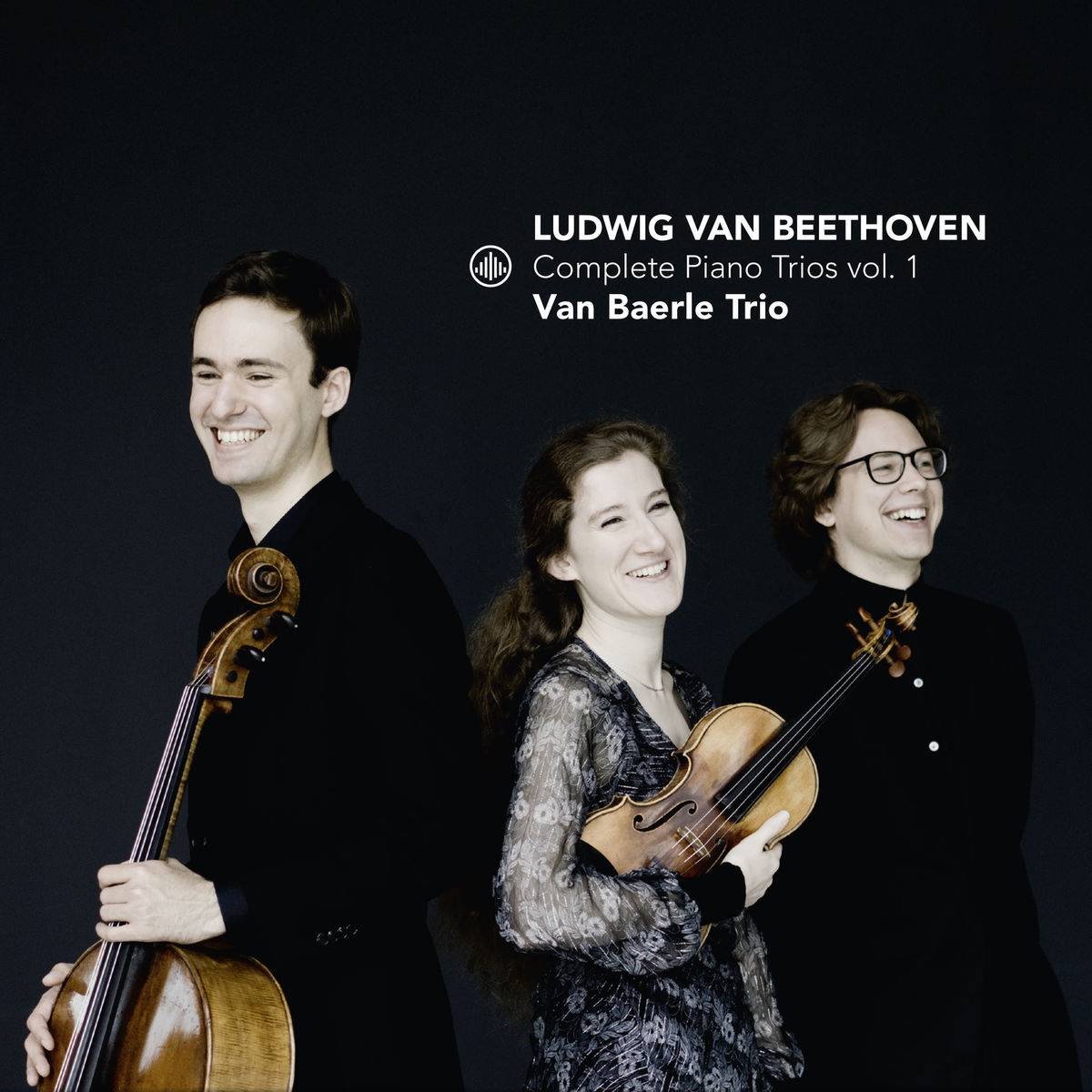
Van Baerle Trio – Beethoven: Complete Piano Trios, Vol. 1 (2017)
FLAC (tracks) 24 bit/44,1 kHz | Time – 01:19:42 minutes | 687 MB | Genre: Classical
Studio Masters, Official Digital Download | Digital Booklet, Front Cover | © Challenge Classics
Beethoven’s primary reason for settling in Vienna in 1792 was to study with Joseph Haydn, who at the time was widely considered the greatest living composer. Beethoven’s three Piano Trios op. 1 were the first compositions that he deemed important enough to give an opus number. They were dedicated to Prince Karl Lichnowsky, a patron of Beethoven in whose house he lived for some time. According to Beethoven’s lifelong friend Ferdinand Ries, Haydn was complimentary about the set of trios. The trios combine various elements that would have been familiar to Beethoven’s contemporaries. Less familiar, however, would be the fact that the trios contain four movements rather than the three that had been traditional in this genre. Although changes from major to minor had been common in the music of previous generations, where they would normally apply to just the last chord, Beethoven employs this technique more extensively here than was probably common at that time.
Much like op. 1, the Trio op. 11 is also connected to the Viennese nobility of the time. Beethoven cleverly dedicated it to Maria Wilhelmine Countess of Thun-Hohenstein. In other ways, too, Beethoven tried to make this a particularly attractive publication for the Viennese public: the trio could be performed with a clarinet instead of a violin, a flexible approach to instrumentation that would doubtless increase its marketability. In addition, the last movement consists of a theme from Joseph Weigl’s comic opera L’amor marinaro, followed by a series of variations. At the time when Beethoven wrote this trio, Weigl’s opera was very popular in Vienna.
This recording was made using a Chris Maene Concert Grand built in 2017.
This remarkable instrument combines the knowledge and materials used in modern piano building with those found in older historical instruments. The most striking feature is that unlike in modern grand pianos, in which the strings in the bass and middle registers cross, in this instrument all strings run parallel to each other. As a result, it combines the solidity of a modern concert grand piano with the transparent sound ideal of older instruments. The sound of this symbiosis of old and new was a source of inspiration during the recording of Beethoven’s Piano Trios.
Tracklist:
Ludwig van Beethoven (1770-1827)
01. Piano Trio No. 1 in E-Flat Major, Op. 1: I. Allegro
02. Piano Trio No. 1 in E-Flat Major, Op. 1: II. Adagio cantabile
03. Piano Trio No. 1 in E-Flat Major, Op. 1: III. Scherzo. Allegro assai
04. Piano Trio No. 1 in E-Flat Major, Op. 1: IV. Finale. Presto
05. Piano Trio No. 3 in C Minor, Op. 1: I. Allegro con brio
06. Piano Trio No. 3 in C Minor, Op. 1: II. Andante cantabile con variazioni
07. Piano Trio No. 3 in C Minor, Op. 1: III. Menuetto. Quasi Allegro
08. Piano Trio No. 3 in C Minor, Op. 1: IV. Finale. Prestissimo
09. Piano Trio in B-Flat Major, Op. 11: I. Allegro con brio
10. Piano Trio in B-Flat Major, Op. 11: II. Adagio
11. Piano Trio in B-Flat Major, Op. 11: III. Tema : Pria ch’io l’impegno. Allegretto
Personnel:
Hannes Minnaar (piano)
Maria Milstein (violin)
Gideon den Herder (cello)
Download:
mqs.link_VanBaerleTri0Beeth0venC0mpletePian0Tri0sV0l.120172444.1Q0buz.rar




















![Van Baerle Trio - Complete Works for Piano Trio Vol. 5 (2020) [FLAC 24bit/44,1kHz] Van Baerle Trio - Complete Works for Piano Trio Vol. 5 (2020) [FLAC 24bit/44,1kHz]](https://getimg.link/images/imgimgimg/uploads/2020/07/CUH7BJB.jpg)
![Van Baerle Trio - Beethoven: Complete Piano Trios Vol. 3 (2018) [FLAC 24bit/44,1kHz] Van Baerle Trio - Beethoven: Complete Piano Trios Vol. 3 (2018) [FLAC 24bit/44,1kHz]](https://getimg.link/images/imgimgimg/uploads/2019/06/wrKpoY8.jpg)
![Van Baerle Trio - Beethoven: Complete Piano Trios, Vol. 2 (2018) [FLAC 24bit/44,1kHz] Van Baerle Trio - Beethoven: Complete Piano Trios, Vol. 2 (2018) [FLAC 24bit/44,1kHz]](https://getimg.link/images/imgimgimg/uploads/2018/11/nHpiGsc.jpg)